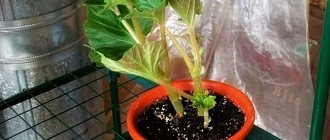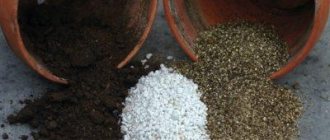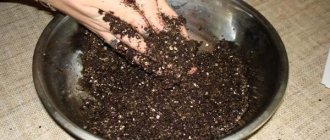Violet belongs to a variety of flowers that seem ordinary when compared with other specimens, but upon close contact it becomes an indispensable decoration for your windowsill. Moreover, the flower has a very long flowering period. By providing minimal quality care, you can enjoy beauty almost the entire season. The predecessor of the house violet is Saintpaulia, which once grew on the rocky terrain of the African savannah. Active selection of this plant began at the beginning of the 20th century. Currently, there are 8,500 species and varieties of domesticated violets. This is a quantity that is very difficult to master. Each species has its own varietal characteristics and, accordingly, regionalized cultivation methods. But the relationship of the plant to the soil composition and sufficient, proper nutrition remains the same on the territory of any country. Thus, having decided to plant violet plantings on your windowsill, you need to decide on the variety, and most importantly, familiarize yourself with the growing rules, in particular, what kind of soil for violets will be needed. If everything is done correctly, this process will not be particularly difficult, the plant will develop well, bloom abundantly and efficiently for a long period.
Our article is devoted to the direct rules for preparing the soil for replanting Saintpaulia, and the nutritional composition of the soil for violets in general. There are varieties that are more scrupulous about the composition of the soil, some are completely undemanding, so when choosing a variety, you need to familiarize yourself with all the varietal characteristics and select the best option for yourself. The most popular among flower growers, but also the most demanding in terms of growing conditions, is the Dance of the Galaxy variety.”
Indoor violets description
Usambara violet, or Saintpaulia family. Gesneriev - a small indoor flower with a short stem and leaves collected in a rosette. The color of the leaves varies from light green to dark brown, and there are variegated varieties. Flowers are single, semi-double and double. Through the efforts of breeders, the wild blue violet has acquired all sorts of shades and colors. In the collection of an experienced amateur you can see flowers with patterns, stains, inclusions, and a contrasting border.
indoor violet
Saintpaulia blooms from April to November, but with artificial lighting, flowering can continue all year with short breaks. Violet is a light-loving plant, but does not tolerate direct sunlight. The ideal placement for the plant is windows facing east.
Indoor flowers need moderate watering. Feeding should be done once a month. It propagates very easily: by cuttings, by dividing the bush, by seeds. Only at first glance, growing Saintpaulia seems to be a simple matter; proper care for it requires a certain amount of experience and patience.
Care after transplant
To ensure that transplanted plants do not experience stress and recover faster, they need to be helped with proper care . It is necessary to maintain optimal temperature, soil moisture and lighting.
After transplanting the perennial, adhere to the following rules for 2 weeks:
- cover the plant with film ; when condensation forms, remove it for a couple of minutes for ventilation;
- the flower pot is left in a warm place (24 degrees) ;
- Saintpaulias provide sufficient lighting, but protect from direct sunlight .
Soil for violets
Failures associated with flower breeding are most often associated with the wrong choice of soil composition. A regular substrate for Saintpaulia will not work; this can lead to rotting of the root system. An experienced amateur knows that properly prepared soil for violets is the basis for its proper breeding.
The Usambara violet is native to Southeast Africa, where it lives on small patches of land on the slopes of the Usambara Mountains. It is the growing conditions that explain the presence of a small superficial root system in the violet and its requirement for specific soil. The soil for Saintpaulia should be light, porous, well breathable and absorb moisture.
what kind of soil does a violet need?
In addition to the composition of the soil mixture, the choice of pot for the plant is important. The roots of Saintpaulia grow not deep into the soil, but along the surface of the soil. The planting container for the flower should be small in size, the height should be equal to the width, and there must be drainage holes.
What they love
Usambara violet is a plant that loves care and does not tolerate neglect.
How to prepare for winter
With the onset of cold weather, you should think about how to maintain the plants so that they do not die and open their buds in the new season.
What to choose from tools: shelves, racks
Professional flower growers keep Uzambara violet on special racks. This allows you to create ideal conditions, constant lighting and no drafts.
The shelving should be such that it is convenient to care for the plants, and the developing specimens do not interfere with each other. Fluorescent lamps are usually hung on each tier
or “flora”, since there may not be enough natural light in this arrangement.
Acidity
Soil acidity plays an important role when growing plants. Proper plant development, flowering, and immunity from diseases depend on its level. Violet is very sensitive to this indicator; it cannot grow in either neutral or acidic soil.
Attention! Saintpaulias prefer slightly acidic soil—6-6.5 pH.
If the pH level is lower, the flower's ability to absorb phosphorus and nitrogen is reduced. Plants look pale, weak, and often drop their buds. In conditions of pH above 6.5, the absorption of nutrients is also impaired. Litmus paper can be purchased as an indicator in flower shops. Over time, under the influence of external factors, acidity can change, so changing the color of leaves, slowing growth, and falling flowers serves as a signal to test the soil for acidity.
Transfer time
For violets to take root better, spring is . At this time of year, the plant has enough natural light, and the temperature for transplantation is optimal. As a result, Saintpaulia will tolerate a change of “place of residence” well.
September and October are also recommended for replanting capricious violets into new pots. In the summer heat, it is undesirable to touch the plant . At high temperatures, the transplant will cause him unnecessary stress. The same applies to the winter period. Due to a lack of sun and uncomfortable temperatures, the plant may not take root and die.
Optimal conditions for the transplantation procedure are ten-hour daylight hours and a temperature of +18 degrees . If you still need to replant Saintpaulia in winter, you need to install special lamps for additional lighting and ensure the required level of humidity in the room.
Beginning flower growers often ask whether it is possible to replant a blooming violet. Transplanting Saintpaulia during flowering is resorted to only in emergency cases .
If a plant is exposed to a disease or is attacked by pests, it must be replanted immediately, regardless of flowering or time of year. The violet is also replanted if it is too flooded , which can cause the roots to rot.
Important! After transplantation, flowers or buds should be removed so that the plant directs all its energy to rooting and not to flowering.
Under normal conditions, the flower is not touched during the budding period. Flowering indicates the plant is in good health. Since it blooms, it has enough nutrients. Therefore, replanting can be delayed until flowering is complete.
Some gardeners rely on the lunar calendar for transplanting violets. It indicates favorable periods for planting, down to the day.
Which soil has the best composition?
The composition of the soil for violets must contain the following components:
- Nutritious soil. This can be leaf or turf soil. Compost and vermicompost may also be present in small quantities.
- Fillers. Serve to make the soil loose. These include coniferous soil and peat. It is better to use high peat.
- Leavening agents. They give the soil breathability and make the substrate lighter. Vermiculite is a hydromica with a high hygroscopicity coefficient. Perlite—granulated silica (produced in Ukraine) improves soil structure and can make up 10-20% of the mixture. If it is impossible to find these components, use ordinary sand.
- Moisture holders. You can use sphagnum moss and charcoal. They help increase hygroscopicity and regulate humidity. Sphagnum moss has antibacterial properties.
If the acidity of the earth mixture exceeds the norm, dolomite flour is additionally used. Expanded clay is used as drainage and placed at the bottom of the flower pot.
How to prepare soil with your own hands
Most hobbyists prefer soil mixtures prepared with their own hands. Each avid violet grower has his own recipes for making substrates based on his own experience. To prepare soil for Saintpaulia at home, you must follow a number of the following rules.
Nutrient soil and peat are disinfected by heating in the oven at 100˚C for half an hour or steaming in a colander over boiling water for 20 minutes. When the soil warms up, all microflora is destroyed: harmful and beneficial. Therefore, recently they prefer disinfection by spilling the soil with a solution of phytosporin.
preparing soil for violets at home
The soil for Saintpaulia is prepared as follows:
- Nutrient soil (see above) is mixed with peat in a 3:1 ratio. For 5 liters of the mixture you need to add 1 cup of perlite and vermiculite, a half-liter jar of finely chopped sphagnum moss, and half a cup of charcoal.
- If any component is missing, it can be compensated for by another. The main thing is to maintain the porosity and lightness of the soil. The hand should easily enter the prepared substrate.
- The finished earth mixture should be checked for acidity. If it is elevated, dolomite flour comes to the rescue. Some people add ground eggshells to the finished mixture.
Important! When preparing a soil mixture for violets, the main thing is that it is characterized by porosity, lightness, water and air permeability.
Earth laying technology
Do-it-yourself soil must be disinfected - poured with a 1% solution of potassium permanganate or heated in the oven (microwave) at a temperature of +90...+100°C.
After the soil has been disinfected or spilled with boiling water, it must be left for a month to restore its properties. Then they fertilize it and begin the process of placing it in a pot.
The laying technology is as follows:
- Place a drainage layer on the bottom, which should occupy 1/3 of the height of the pot.
- Cover with a small layer of soil.
- Set violet roots.
- Cover with the remaining soil without compacting it.
When placing a flower in the ground, you must ensure that the growing point is not covered, the roots are not bent, and the lower leaves do not touch the ground. The first watering will need to be done after a week, and the first fertilizing - no earlier than 2 weeks later (if additional fertilizers were not applied during planting).
To summarize, we note that growing violets involves certain hassles. The most important thing is to choose the right place for it with good lighting and the recommended soil composition, as well as to ensure proper watering. But all the care efforts are more than compensated by the unique appearance of bright and abundantly blooming violets.
Soil for baby violets
The composition of the soil for flower children should be less nutritious. An example of a substrate for young plants could be: high peat, vermiculite, sphagnum moss, each taken one third. The main requirements for the soil mixture are maintaining a sufficient amount of moisture and good aeration. This prevents the cuttings from drying out and prevents the young roots from rotting.
violet babies grew up in slightly acidic soil
The prepared soil is checked for lightness. Holding part of the soil in your fist and then opening your palm, the soil should crumble easily, be homogeneous, without lumps. When preparing a pot for rooting children, it is especially important to lay a layer of expanded clay as drainage.
Advice! A good effect is achieved by rooting the children in finely chopped sphagnum moss, which has disinfecting properties.
The need for additives.
Below we will try to most briefly but clearly describe the need for any additive, excluding fertilizers, which categorically affect the development of violets:
- Perlite is a volcanic glass of acidic composition. What are the advantages - the thermal effect is preserved; if a temperature difference occurs, it will protect you from hypothermia.
- The drainage layer will significantly reduce the acidity of the soil.
- loosening process - promotes timely absorption of soil during watering. vermiculite
- mulching.
- aeration. Reduces acidity in the soil, creates protection for the root system during sudden changes in temperature. Promotes maximum rooting of cuttings.
- Sphagnum moss has all the properties that protect the plant from rotting, the occurrence and activity of bacteria, and prevents the appearance of fungus. If the moss is crushed and cut, good looseness of the soil is created. Acidity stabilizes to a slightly acidic consistency. Moss also creates the appearance and direction of a kind of mat to retain the necessary moisture. Promotes good rooting of leaves.
- peat is the basis for any soil composition, a substance of organic origin; for growing violets, it is advisable to use a lighter, top layer. What are the advantages: light, loose soil composition, good air permeability, creation of the necessary acidic environment, helps remove limescale. In such a substrate there is a reduced percentage of the presence of bacteria.
- dark layer of peat, low-lying - capable of retaining moisture, richest in composition in organic substances. The downside is that it is not recommended to use it undiluted.
Important points! It must be remembered that all the beneficial properties of moss are contained only in living form. Vermiculite and moss must be thoroughly washed before use. All additives are at your discretion, as is the amount of added composition. All recipes given are also only recommendations. All recommendations and advice on the composition of the soil and filling it with nutrients are not able to save the vial, provided that you have watered it incorrectly.
Conclusion! The health of the bush depends not only on the quality of the soil; there are several other points. In our article we consider only the qualitative composition and nutrition during the growth process. You can find out everything else in the additional materials.
What kind of soil does a violet need for wick irrigation?
Recently, watering violets using a wick has become increasingly popular. Wick watering is the moistening of the soil with water and fertilizers dissolved in it using a special wick lowered into a container of water. To water through a wick, you need to create a lighter, loose soil mixture. With this method of watering, the soil constantly remains wet, which can lead to rotting of the roots. Therefore, the proportions change when composing the substrate. More peat and perlite are added.
With wick irrigation, a landless method of growing a plant is practiced. The substrate used is:
- vermiculite;
- sphagnum moss;
- coconut fiber.
It is clear that such a mixture does not contain useful organic and mineral substances; fertilizers must be supplied with water.
Preparing the plant
Before transplanting a violet, it should be prepared for the procedure . The soil in the pot is moistened so as not to damage the roots of the plant. There is no need to fill the pot with water until dirt forms; the substrate should remain loose.
The violet is carefully removed from the old flowerpot, trying not to stain the leaves. Some of the root shoots are cut off and large leaves are removed . These manipulations activate the rejuvenation of the flower.
Where to buy ready-made soil
If you do not have the time or desire to make a soil mixture for violets with your own hands, you can purchase ready-made soil in the store.
Advice! You need to take a responsible approach to choosing a purchased substrate. Before making a purchase, it is recommended to read reviews or consult with a specialist.
Greenwold universal soil has proven itself well. It is suitable for growing many flowers, with the exception of those that require acidic soil (such as azaleas). It has a good organo-mineral composition:
- pH 5.8-6.2;
- nitrogen(N) 150-400 mg/l;
- phosphorus (P2O5) 120-300 mg/l;
- potassium oxide (K2O) 180-300 mg/l
The soil mixture contains all the necessary fillers. The disadvantage is the high price. Good purchased substrates for Saintpaulias: Agrobalt, produced in Estonia; FASCO Flower happiness. Soil for violets.
greenwold universal primer for violets
Professional soils
Many violet growers contain a large number of plants. The passion for Saintpaulias involves breeding beautiful, but very difficult to care for varieties. In such cases, it makes sense to purchase professional primers for violets. An example of a very fastidious variety that needs a professional substrate is the violet selected by Elena Korshunova from the Gardens of Babylon. This is a lovely plant with huge 6-8 cm thick, double, dark red flowers in the shape of chrysanthemums. Forms fabulous cascades over a small leaf rosette.
The following professional mixtures for violets are most often used: Klasmann TS1 substrate, Laflora soil, Kekkila White substrate (Kekkila soil).
Professional soils are usually more expensive and are sold in 200 liter bags, which is difficult for amateur gardeners to obtain. Which exit? Buy bags in groups of several people.
Advice! You can contact large collectors of these indoor flowers. Sometimes they sell professional soil mixtures packaged in small batches.
KLASMANN TS1, a universal substrate, is especially recommended. The main ingredient is a surfactant for quick and easy wetting, mineral water-soluble fertilizers, microelements. Agrochemical indicators: pH (CaCL2)—5.0; pH (H2O)—6.0. Fertilizer content—0.5%.
Klasmann (Klasman) peat substrate TS1
As experienced hobbyists admit, the use of this substrate is optimal when breeding Saintpaulias. As can be seen from the table, 5 liters of Klassmann mixture is quite affordable. The disadvantage is the impossibility of purchasing the product in a store and in small packaging.
Habitat
The soil in which Saintpaulias grow naturally is not particularly rich. But it contains all the necessary substances, albeit in small quantities. It is also optimal for homemade violets. Sometimes novice violet breeders face a number of problems. Having bought bushes or “babies” of violets in the store, you return home satisfied with your purchase, and then suddenly it turns out that the plants often die once they get into the apartment. They are weak, take root poorly, rarely sprout, bloom little and often get sick. There is only one reason for this - they are grown on artificial soil. Once in your house, they are deprived of additional complementary feeding in the form of all kinds of additives and therefore die.
What kind of soil does violet like? In the natural environment of Saintpaulia, the soil is a mixture of sand, peat, moss, humus, charcoal, rotting organic matter and a small amount of turf soil. The conditions in their habitat are quite harsh, and this is what provides the plants with high “survivability”.
Flower growers forum: reviews, advice
It is customary for beginners and experienced flower growers to share tips on caring for violets, their unique recipes for making substrates, and show off their achievements. The forum helps you find answers to your problems and avoid repeating the mistakes of others.
Natalya writes: “I recommend using coarse sand and coconut fiber instead of perlite and vermiculite, the violets began to bloom better.”
Andrey said: “For wick-irrigated Saintpaulias, I make a substrate based on Klasmann soil—40%; perlite—30%; foam crumbs—10%.”
Elena complains: “I bought a mixture for violets from the Garden of Miracles; after replanting, the leaves turned yellow.”
Inna writes: “I sift through any purchased soil, there is a lot of waste. I recently sifted through a 5 liter bag and only 3 liters remained. The rest is branches, garbage, sticky balls like plasticine.”
Elena writes: “Greenvold Universal for blooming has deteriorated lately. There is a lot of garbage, the color is not light brown, but dark. I had to switch to Klasmann TS1. I felt the results immediately.”











